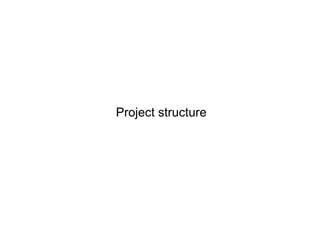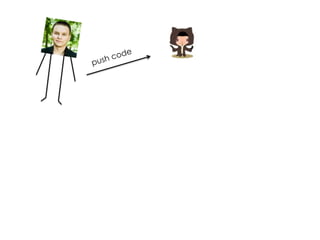Node.js in a heterogeneous system
- 1. Node.js in a heterogeneous system Alexey Migutsky : Senior Software Developer @ Lohika
- 2. What do we do?
- 3. What do we do? Ubix.io PaaS for BigData analytics in cloud environments.
- 4. What do we use?
- 5. Scala Python What do we use? Bash Javascript
- 6. BDAS (Spark + Shark) AWS Black Voodoo Magic™ What do we use? Velocipede™ Brains
- 7. What’s next?
- 8. Node & Maven Jenkins & Node testing What’s next? Velocipede™ CI
- 9. ?
- 10. Why Node.js?
- 11. Why Node.js? Fast and easy Easy websockets support Plays nice with AWS We use it as a web-tier orchestrator
- 12. Node & Maven
- 13. Node & Maven We use maven (pom.xml) We use npm (packege.json) We have node+maven projects!
- 16. Project structure + Subprojects are maven modules + Subprojects use common code base + Easy « build process » + Easy deployments - Uber root package.json - Mangled dependencies
- 17. Custom modules
- 18. Custom modules Live in root /node_modules right now Planning to move to separate git repos Tested with subprojects
- 19. Tests
- 20. Tests Mocha + Sinon + Chai Sinon-chai + mocha-sinon Chai-as-promised Rewired Jenkins TAP plugin
- 21. Test example describe('##getConfiguration', function () { it('should return promise and resolve with data ', function (done) { var promise = sysStore.getConfiguration('somekey'); promise.should.eventually.become({key: 'somekey'}) .then(function () { mockDb.getItem.should.be.calledWithMatch( mockTables.system, {key: sinon.match.string} ); }) .should.notify(done); }); });
- 22. Test Env How-to
- 23. Test Env How-to Goals: - run from root using mvn test run from sub using npm test human-readable result logs result >> in console and file Jenkins support http://www.mindmeister.com/346337860
- 24. Test Env How-to package.json "devDependencies": { "mocha": "*", "sinon": "1.6.*", "chai": "*", "sinon-chai": "*", "mocha-sinon": "*", "chai-as-promised" : "*", "rewire" : "*" }, "scripts" : { "test" : "./runtest.sh" }
- 25. Test Env How-to runtest.sh #!/bin/bash mocha $(find test -name '*.js') -R tap | tee test/testresults.tap; (exit ${PIPESTATUS[0]}) The whole command runs in a single line. Wrapped here for display purpose
- 26. Test Env How-to pom.xml (maven-antrun-plugin) <execution> <id>test-nodejs</id> <phase>test</phase> <configuration> <tasks name="Run mocha tests"> <exec dir="${basedir}” executable="npm” failonerror="true"> <arg value="test"/> </exec> </tasks> </configuration> <goals> <goal>run</goal> </goals> </execution>
- 27. Build process
- 28. Build process - No npm install on build server (too slooow) - Fixed deps versions (update by-hand) - All deployable deps are checked in! - Build phase only copies deps in subprojects http://www.futurealoof.com/posts/nodemodules-in-git.html
- 29. Deployment
- 30. Deployment - Builds are stored at S3 - Copied to instances by orchestration tools - Managed by upstart
- 31. Deployment upstart (server.conf) #this should be put in /etc/init/server.conf on Ubuntu description ”Node.js server" author "Alexey Migutsky" # used to be: start on startup # until we found some mounts weren't ready yet while booting: start on started mountall stop on shutdown # Automatically Respawn: respawn respawn limit 20 5 # Max open files are @ 1024 by default. Bit few. limit nofile 32768 32768 script # Not sure why $HOME is needed, but we found that it is: export HOME="/root” exec /usr/local/bin/node /usr/local/server/app.js >> /var/log/server-err.log 2>&1 end script post-start script end script http://kvz.io/blog/2009/12/15/run-nodejs-as-a-service-on-ubuntu-karmic/
- 32. Deployment hint Have a look at http://pm2.io/
- 35. « hack some node.js » npm test
- 38. build & test
- 43. That’s it!

























![Test Env How-to
runtest.sh
#!/bin/bash
mocha $(find test -name '*.js') -R tap |
tee test/testresults.tap; (exit ${PIPESTATUS[0]})
The whole command runs in a single line. Wrapped here for display purpose](https://image.slidesharecdn.com/node-131130105549-phpapp01/85/Node-js-in-a-heterogeneous-system-25-320.jpg)


















